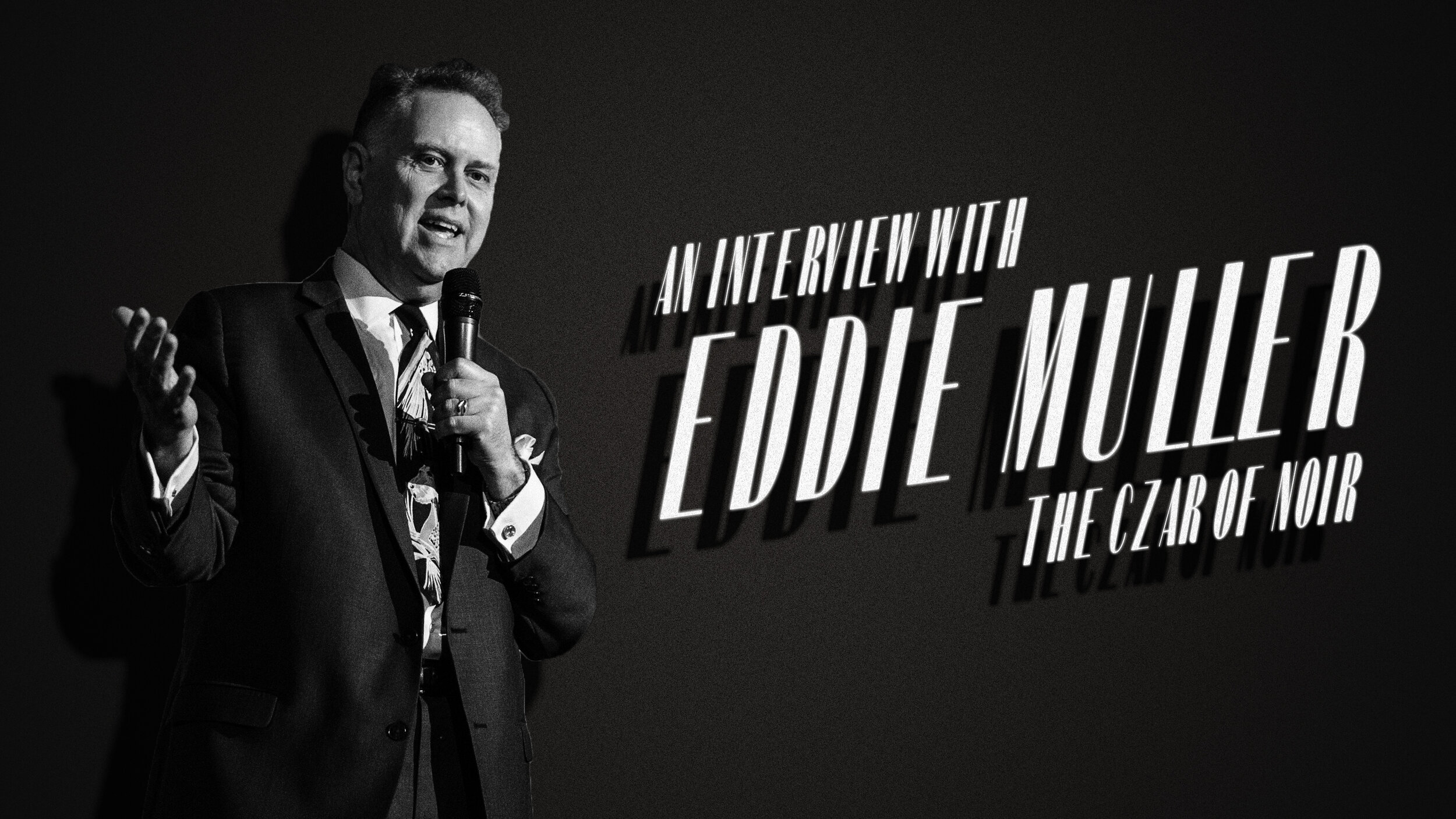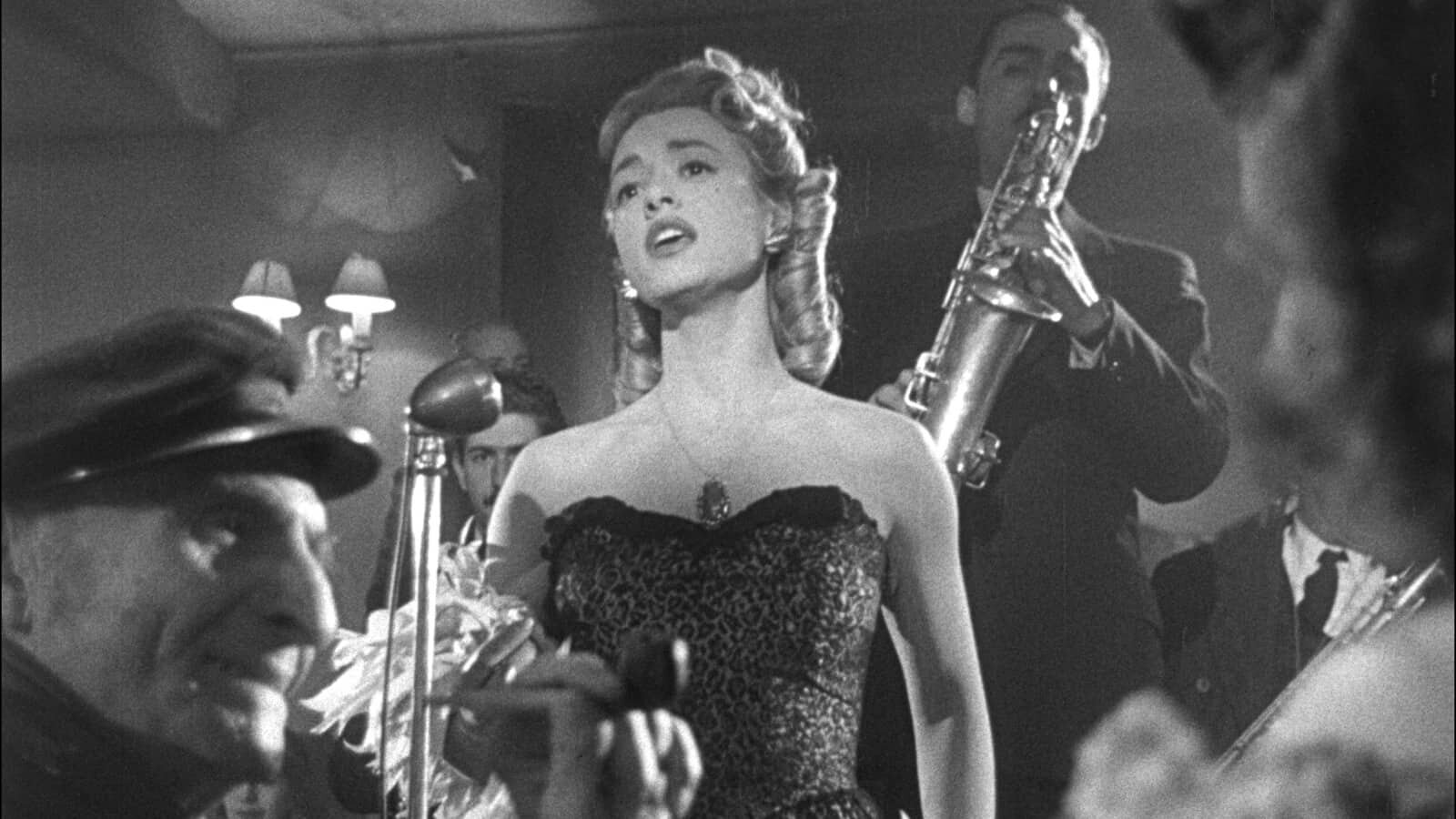An Interview with Eddie Muller, The Czar of Noir
If you ask Eddie Muller to define film noir, he could give you any number of answers. “Suffering with style.” “A pervasive sense of dread.” “Bad decisions that make great stories.” While femme fatales, heroes with no future, and a bevy of cigarettes may reveal themselves on the surface, his work proves that — much like the moral situations found in noir films — the answer isn’t as cut and dry as you might think. For over two decades, the film historian, preservationist, writer, host, and curator has dedicated himself to answering that question, or at least getting as close as possible to one.
Muller began hosting gatherings in the name of noir back in 1998. Starting in Los Angeles’ Egyptian theater, the event eventually migrated up north to Muller’s home town of San Francisco in 2002, finding a new home in the Castro Theater and officially adopting the name ‘Noir City.’ It was here where the event found its audience and took off. It became so successful that it eventually resulted in seven satellite festivals in Chicago, Austin, Hollywood, Detroit, Boston, Washington D.C., and our very own Seattle which is entering its thirteenth year.
“The whole thing really caught fire. The reaction was so tremendous in San Francisco that it eventually led me to create the Film Noir Foundation. We were . . . well quite honestly, we were making so much money at the festival that I was like, ‘I gotta do something with this.’ I would ask for certain films [from studios] and be told [they] don’t have a print. Films were missing, so that’s why I elected to use the proceeds from this festival to start the foundation.”
Muller serves as the president and founder of the Film Noir Foundation, an institution that takes it upon themselves to restore prints of “especially lesser-known titles that have slipped through the cultural cracks, but are worthy of rediscovery.” Since its founding in 2005, it has restored thirteen films and struck new prints for twenty-two others, including two Argentinian films headlining this year’s 18th Annual Noir City.
Typically seen as an American affair, noir was born out of World War II and built atop pulp novels, German expressionism, and 1930s transgressions. “The patriotic duty during The Great Depression and WWII was to make movies that boosted the moral of the public during hard times,” Muller said. “The benefit of winning the war and saving the world from totalitarianism was that now we get to tell harsher bleaker stories because I guess we’ve grown up now.”
These American films make up the bulk of Muller’s programming, but this year, he is returning to a festival theme only done once before: international noirs. Drawing from sources all around the world like the Swedish Film Institute, the Korean Film Archives, and Cinecittà Studios in Rome, Muller programmed twenty-four different noirs from eleven different countries, all of which retain the signature characteristics of noir, but with social and political underpinnings unique to their home countries.
“In this festival, I’m showing films from many countries that were on the losing end of World War II. A whole day of Japanese films, a day of German films, even an Italian film. That’s the axis power right there. To see stories that we recognize as noir being told from the perspective from people who lost the war is really fascinating to me because it makes the American version of noir sort of light weight in comparison honestly. You’re seeing stories that are set in communities that are bombed out, where people are impoverished and in disgrace. It’s a world you never see in American films…You’re seeing the same stories, the same style, the same tone, but it’s the defeat [of WWII] that’s thick in these other movies.”
Muller added, “The fear of being exposed and being found out by the ‘bosses’ is a very common theme in these films, particularly for European countries. These countries substituted fascist regimes with a communist one under a different name, and it’s still people struggling with an authoritarian government watching everything you do.”
Still from El Vampiro Negro, one of the two new restorations playing this year at Noir City.
The selections in this year’s festival include long time classics and little known gems. From Julien Duvivier’s French debut Panique and Seijin Suzuki’s inventive Japanese yakuza film Branded to Kill to Jiri Weiss’ Czech New Wave criminal romance 90 Degrees in the Shade and Helmut Kautner’s West German post-war drama Black Gravel, this year’s programming for Noir City is as eclectic as it is diverse. Included in the mix are the two aforementioned Argentinian films directed by Román Viñoly Barreto, El Vampiro Negro (1953) and La Bestia Debe Morir (1952), both of which are new restorations from the Film Noir Foundation.
At the time of their production, Argentinian studios didn’t have vaults to preserve films as they were made. Much of the country’s early film history is lost, and it takes the efforts of film historians like Fernando Martín Peña, a friend of Muller’s, to find these treasures and save them. You may know Peña as the man responsible for finding a complete copy of Fritz Lang’s Metropolis back in 2008, but he is also the individual who introduced both El Vampiro Negro and La Bestia Debe Morir to Muller.
“He knows what my tastes are. He goes, ‘Eddie, I’m gonna show you this film,’ and as soon as I saw these movies I was just knocked out by them. They so perfectly fit with the noir tradition. I just find the films to be fabulous from a story telling perspective. The fact that both of these movies are made by the same filmmaker made me think, ‘This is great. We can really revive this guy’s reputation.’ These films just need to be seen.” Muller enthusiastically said.
The decision to return to an all international Noir City comes in the wake of great social, political, and economic unease in America. Reading the news headlines on any given day is distressing, often painting a bleak state of affairs in this country with the normalization of sordid behavior straight out of a noir.
“To me it’s very interesting because we’re now in a time when the criminals are in charge, and they’re telling us everything is fine. Like ignore it. It’s under control. Don’t worry about it. Noir kinda starts from that proposition. We know it’s not alright, so don’t try to kid us. We’ll take our pleasures and our victories where we can, but we know from the jump that the game is rigged.”
“Many times there were scenes in these movies where the audience was slack jawed saying, ‘Jesus, this could be happening right now.’ How weird is it that people find a commonality amongst people all around the world through stories of desperation and paranoia? What you realize is everyone feels that everywhere around the world. If you’re empathetic to these stories, you naturally can see the commonality between what [we’re all] going through.”
This unifying factor Muller notes is perhaps responsible for noir’s lasting legacy. For more than seven decades, it has satisfied our insatiable curiosity for vice, to see our seedy world with all its imperfections and moral ambiguities on screen where the darker side of human nature comes through. As Muller puts it, we flock to noir because it “enables [us] to face unpleasant truths where it doesn’t feel so oppressive or devastating.” And in times like these, we could use something like that now more than ever.
—
Interview questions prepared by Greg Arietta, Kevin Conner, and Megan Bernovich. Special thanks to Anne Hockens from the Film Noir Foundation for helping arrange the interview. Quotes used in this article have been edited for clarity and readability.



